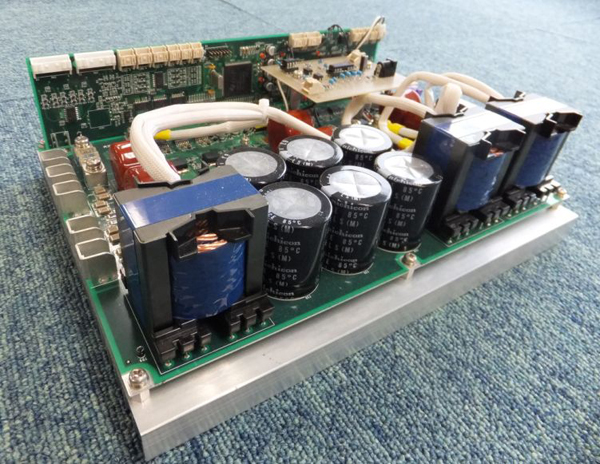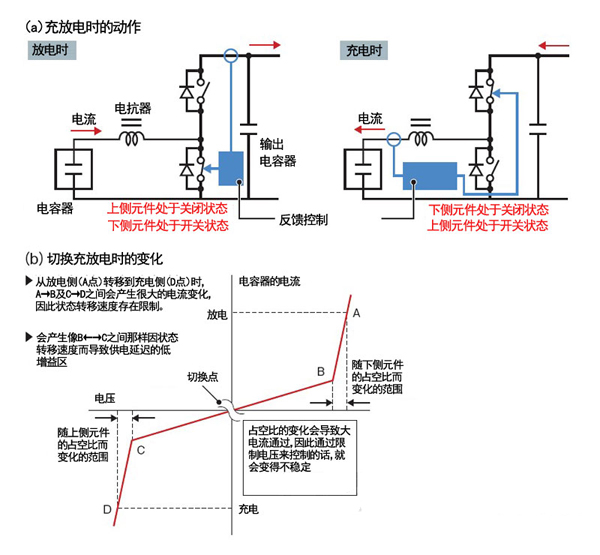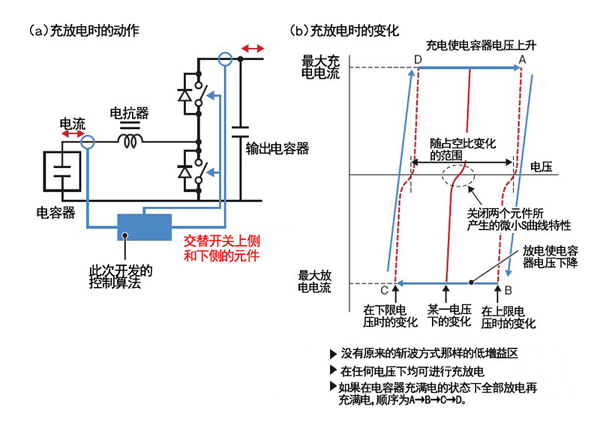"Even even our trial car, the fuel efficiency can be increased by about 15%."

The digital control substrate developed this time
Japan's WINZ Corporation, which is engaged in the power control device business, has developed a control board that enables lithium-ion capacitors to be used in hybrid electric vehicle (HEV) power storage devices. Its greatest feature is that even if a capacitor with a large voltage variation during charge and discharge is used, the charge/discharge can be instantaneously switched.
WINZ has trial-produced a simple HEV and is currently verifying the substrate (Figure 1). The trial car is equipped with a 3kW induction motor-generator in the generator section of a commercial vehicle, which can be driven or regenerated via a belt assist engine. The lithium ion capacitor is installed in the luggage compartment and uses the module "ECM-45" of Asahi Kasei FDK ENERGY DEVICE. Its size is the same as that of the original lead storage battery, with a voltage of 45V and a capacity of 166F (30Wh).
The control substrate developed this time consists of a bidirectional AC-DC inverter, a bidirectional DC-DC converter, and a digitally controlled MCU that controls these devices. The trial car can generate 3kW of output power in about 36 seconds when the capacitor is fully charged. According to WINZ, due to the low degree of completion of motor generators, the HEV's fuel efficiency has been improved by about 15% compared with that before the retrofit. However, if properly designed, the fuel efficiency can be increased by up to 30%.
The original control method cannot achieve fast switching
Currently, lithium ion rechargeable batteries are becoming mainstream batteries for HEVs. Lithium-ion rechargeable batteries have high internal resistance, and in order to obtain output power, many units need to be connected to realize high voltage. Moreover, due to the problem of life, the equipped capacity needs to be more than twice the actual capacity for charging and discharging.

Figure 1 Digital Control Substrate for Optimal Lithium Ion Capacitors
WINZ trial-produced a simple hybrid vehicle using lithium-ion capacitors (a). Added motor generators, digital control boards, and lithium ion capacitors (b) that can assist in driving force.
Lithium ion capacitors not only have excellent output power characteristics but also have a long life, so they are expected to replace lithium ion rechargeable batteries in HEV applications. Lithium-ion capacitors are a kind of fuel-efficient improvement measures with high return on investment for such applications, especially in commercial vehicles and small and medium sized trucks that require long periods of use and require repeated acceleration and deceleration in urban areas.
However, mass-produced HEVs using capacitors such as electric double layer capacitors have not come out. Although Mazda is equipped with a regenerative system using electric double-layer capacitors in passenger cars, the electric power recovered in the capacitors is not used for driving but for the use of electronic products in the car.
WINZ states that the reason for this is that it is difficult to perform instantaneous charge-discharge switching control when the voltage at which the voltage changes nearly twice as high during charge and discharge. For example, when a bidirectional DC-DC converter is used for charge-discharge switching, the previous feedback control method is used, and a large current may be generated at the time of switching, so that it cannot be quickly switched (Fig. 2). If the HEV uses a capacitor, it will produce knock-like shocks when switching.

Figure 2 The original method takes a long time to switch
The chopper method using the original feedback control method needs to spend time on switching. This can cause problems such as knocking of the hybrid vehicle, so it is difficult to use the capacitor to assist the driving force.
In response to this problem, WINZ has developed a new control algorithm based on digital control rather than feedback control. Although no details were disclosed, the company claims that the switching elements used for power conversion do not require any changes, and that they can be instantaneously charged and discharged at any voltage by simply adjusting the duty cycle of the two switching elements through digital control (Figure 3). ).

Figure 3 Charge and discharge without switching time
WINZ achieves instantaneous charge and discharge at any voltage by digitally controlling bidirectional DC-DC converters.
WINZ said that by simply changing the settings of the developed control algorithm, it can meet the needs of passenger cars and trucks. Especially for small and medium sized trucks, simply installing a motor in the rear axle section and equipped with a lithium ion capacitor can easily improve fuel efficiency, so the company also wants to promote it as an external device. (Reporter: Hiroshi Koji, Nikkei Electronics)
Straight Reamer,Carbide Straight Shank Reamers,Carbide Straight Shank Chucking Reamers,Carbide Cutting Tools Lathe Reamers
Supal(changzhou)Precision Tools Co.,Ltd , https://www.endmillpro.com